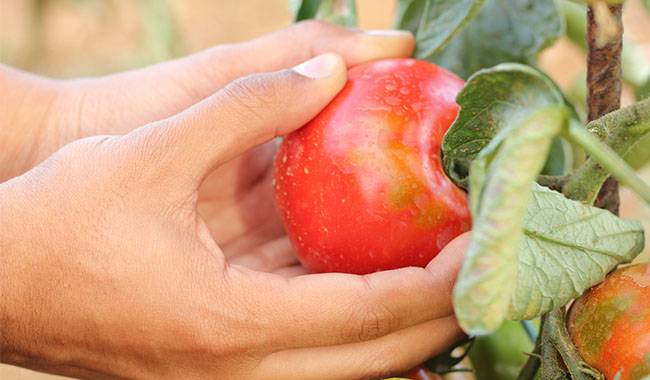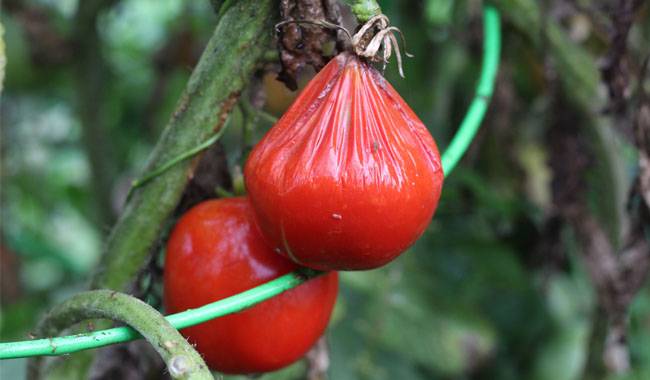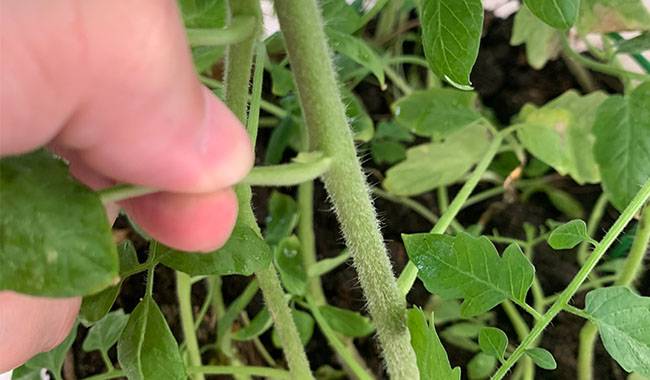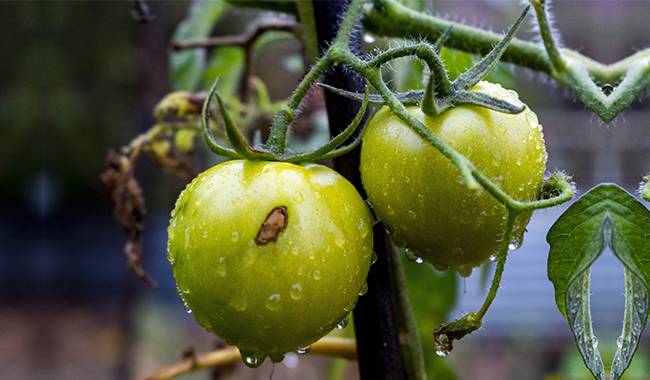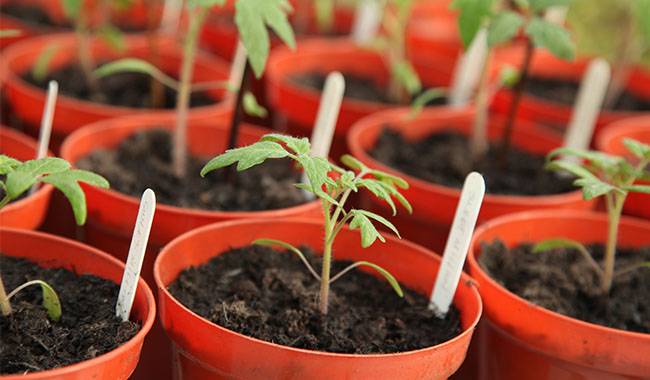
Even experienced gardeners have difficulties when growing tomato seedlings oftenly. For some, all seedlings grow longer and weaker, for others, they suddenly begin to decline and gradually die.
The problem is that it is difficult to maintain the ideal conditions for growing seedlings in the apartment. Seedlings of any plant, including tomato seedlings, need sufficient light, adequate humidity, and optimal temperature.
Important things to know and observe when growing tomato seedlings in an apartment and will be discussed further in the article.
Do not rush to sow seeds
Most of the time, inexperienced gardeners cannot correctly determine the date of sowing; they are in a hurry and aim to harvest as early as possible. As a result, it is difficult to obtain early and decent yields from such plants. Plants planted at a later and more favorable time start flowering and fruiting faster.
The time of sowing varies greatly depending on the area of residence and the climatic conditions of a particular region. It is also very important to know where the tomatoes will be planted in the future – in a greenhouse or outdoors.
It is also important to know if you will be able to cover the plantings if a return to cold occurs, or if you will not be able to visit your plot very often. In the latter case, it’s best to take your time.
The easiest way to calculate the sowing date is as follows. Start counting backward from the approximate date you planted your plants in the greenhouse or open field to the recommended seedling age and seed germination time (for tomatoes – about a week).
The age of seedling growth is reference data based on many years of cultivation practice. For late-maturing varieties and hybrids, the optimal period at the seedling growth stage is 70 days, for medium-maturing varieties – 55-60 days, for early-maturing varieties – 45-55 days.
The approximate conditions of planting were determined practically on the basis of the conditions of planting in the region for many years. But, of course, adjusting to the weather conditions at a particular time, these dates can vary significantly from year to year.
If other cultivation conditions are maintained, seedlings sown on time will be strong and vigorous, and will later take root and develop well.
Do not neglect the preparation of the soil
The causative agent of “seedling root rot,” or simply put, “blackleg,” is always present in the soil. Therefore make sure to disinfect the soil to prevent the disease from killing the seedlings.
Don’t necessarily bother etching the soil mixture in the oven or freezing it on the balcony. There are modern fungicidal preparations available now. It can be used both for soil treatment and for seed dressing (but only according to the instructions).
It is not a chemical, but a biological agent, which is important for those who are against the use of chemicals when growing plants.
Treat the seeds before planting
Not all hobby gardeners are aware that many pathogens persist in seeds. And there are many tomato diseases. Therefore, it is very important to seed treat tomato seeds to prevent the appearance of various diseases.
The simplest and most common method of seed treatment – mixing the seeds with a 1% solution of “manganese” (a dark pink solution). The treatment is carried out for 20-30 minutes. After that, the seeds must be rinsed with clean water.
Proper sowing of tomato seeds
Seeds are sown according to the plan. The distance between rows is 1.5-2inch (4-5 cm) and between plants is 0.4-0.8inch (1-2 cm). The seeds are sown at a depth of about 0.4inch (1 cm). If the seeds are sown deeper, germination may not be uniform.
Observe the distance between seeds when sowing. If seeds are sown too many times, seedlings will later interfere with each other’s development, and overly dense plants can trigger the development of “black legs”.
The most convenient practice is to make a mark with a ruler and then gently sow the seeds with tweezers.
Maintain temperature
Tomato seeds need a temperature of at least 71-77°F (22-25°C) to germinate. When placing containers with seedlings, you must take into account that even in a warm apartment with good windows, the temperature will be much cooler when placed directly on the windowsill, especially near the glass.
If you put containers with seedlings in such conditions, the seeds will not germinate at all. One should either warm the windowsill or place the seedlings on a table next to the radiator or on a window seat.
If you are not an experienced gardener, put a regular thermometer next to the seed tray. This will make it easier for you to control the temperature, as both too low and too high temperatures can kill seedlings.
When seedlings appear to strengthen their root systems, lower the temperature to 53-59°F (12-15°C) for about 4-7 days. When seedlings become slightly stronger, temperatures are maintained at 64-71°F (18-22°C) during the day and 57-60°F (14-16°C) at night. At higher temperatures, seedlings may begin to stretch.
With modern windows, the temperature can be easily adjusted and you can set a micro-ventilation mode to ensure airflow without creating drafts.
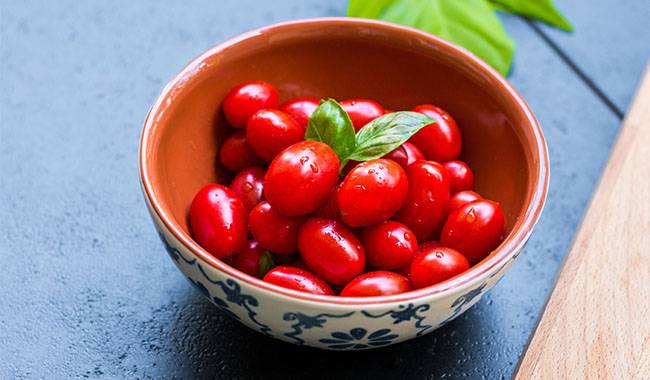
In the case of early sowing, additional light is needed for the sprouts
Tomatoes, plants are light-loving and in order to develop properly, they necessarily need a lot of light. Therefore, first of all, it is very important to determine the number of seedlings that can be placed on a windowsill or special device. During cultivation, all plants should receive sufficient light.
Secondly, seedlings need additional light when sown early. You can use special plant lights for this purpose. However, these lights are quite expensive and many gardeners turn to ordinary fluorescent lights.
In order for tomato seedlings to develop fully, they need at least 11-13 hours of light per day. When sowing early, supplemental light is usually provided for 2-3 hours in the morning and 3 hours in the evening after most seedlings have emerged.
If for some reason you sow late, try to create a light schedule for the seedling of about 16 hours per day, then it will grow more vigorously.
In addition to bulbs, you can also use a foil screen placed directly in front of the seedling to improve its light regime.
Conserve water
The soil in the container used for sowing should be moist, but not too wet, otherwise, the seeds will rot. It is best not to water the sprouts, but to spray them with a sprayer to keep the soil moist.
The water used for watering must be lukewarm. If you use tap water, you must let it sit to allow the chlorine to evaporate. Tomato shoots should not be watered overnight, but only during the day.
Buds with too much humidity and in cold soil can die from “blackleg”. Simply put, this disease develops in moist and cold soil.
Timely picking
If you are not growing tomato seedlings in individual cups, but in a common container, they need to be germinated. This is to ensure that the plants develop properly during growth and do not lack light, water, and nutrients.
Under stressful conditions, the plants will not be able to develop a strong root system, which will subsequently affect the development of the plants and therefore the yield.
Gardening books usually recommend that you start picking after the plant has grown two true leaves. Some experienced gardeners recommend that you start diving when four true leaves appear. At this point, the plants are quite mature and can better tolerate the transplanting process.
Another tip from experienced gardeners is to put 2-3 capsules of calcium superphosphate in the bottom of the cup at the time of picking. Tomatoes are very sensitive to this nutrient. As the seedlings grow, the calcium superphosphate granules will gradually dissolve and be used by the plants.
When picking plants one by one, carefully plant them in the cups and cover them with a layer of soil up to the level of half (first) leaves.
Opinions differ about pruning 1/3 of the roots. Some gardeners recommend not traumatizing the root system, others believe that pruning is necessary to form a branching root system.
Plants should never be placed outside the window immediately after the picking procedure. The root system should be allowed to take root and sprout. For this purpose, the plants should be placed in a cool place for several days.
They can be covered with a piece of polyethylene film, mulching material, and watered with a sprayer under the cover. Under these conditions, seedlings will tolerate the transplanting process more easily.
Fertilizer application is not recommended while the plants are rooting, as it may lead to root burn. Usually, fertilization is started 10-14 days after harvesting.
Feed seedlings properly
Without nutrition, it is difficult to grow good tomato seedlings, but sometimes gardeners overfeed their plants. If you plant the seeds in good quality soil, you can leave the fertilizer alone until the moment of germination and picking. Later (10-14 days after picking), the seedlings can be fertilized with any compound fertilizer used for seedlings, they are now sold in large quantities.
Feeding is carried out every 10 days. Under no circumstances should you increase the concentration of fertilizer, so as not to burn the root system. When applying fertilizer, moisten the soil layer slightly before applying the fertilizer.
Tomato seedlings planted in poor or excessively acidic soil can be deficient in nutrients. This can be judged by the appearance of the plants – they are not developing well.
If the leaves of tomato seedlings are turned upward, their edges curl inward, and their veins are purple – this is a sign of phosphorus deficiency. These symptoms can also be caused by temperatures and too little light. If these factors are not a problem, the plant needs a fertilizer containing phosphorus.
In the case of potassium deficiency, the edges of the leaves will appear dry.
Nitrogen deficiency is accompanied by a change in the color of the leaves. They become pale with a yellowish tinge and the veins turn red.
Most often, “overexposed” seedlings develop nutrient deficiencies because they already lack the volume of soil for cultivation.
Hardening seedlings before planting
Tomato seedlings grow in very different conditions in an apartment than they do later in the garden. Even the most rustic varieties grown indoors are pampered. Therefore, in order for seedlings to quickly take root and grow in their new location, it is necessary for them to gradually adapt to the new (future) conditions.
The hardening process usually starts about 10 days before planting and includes a gradual change of conditions. For this purpose, tomatoes are maintained at night at a gradually reduced temperature of 53-57°F (12-14°C).
It is possible to harden the seedlings on the balcony so that the plants will adapt to the changes in temperature and light. To do this, they are brought to the balcony and gradually increase their maintenance period in the new conditions.
While the temperature drops, the amount of watering of the seedlings is reduced. Seedlings that gradually adapt to their new environment will pass through the stressful conditions of transplanting and start growing more quickly.
Dear reader As you can see, the main conditions for growing tomato seedlings are not very complicated things. You just need to learn them, and then the process will not seem so difficult and demanding.




